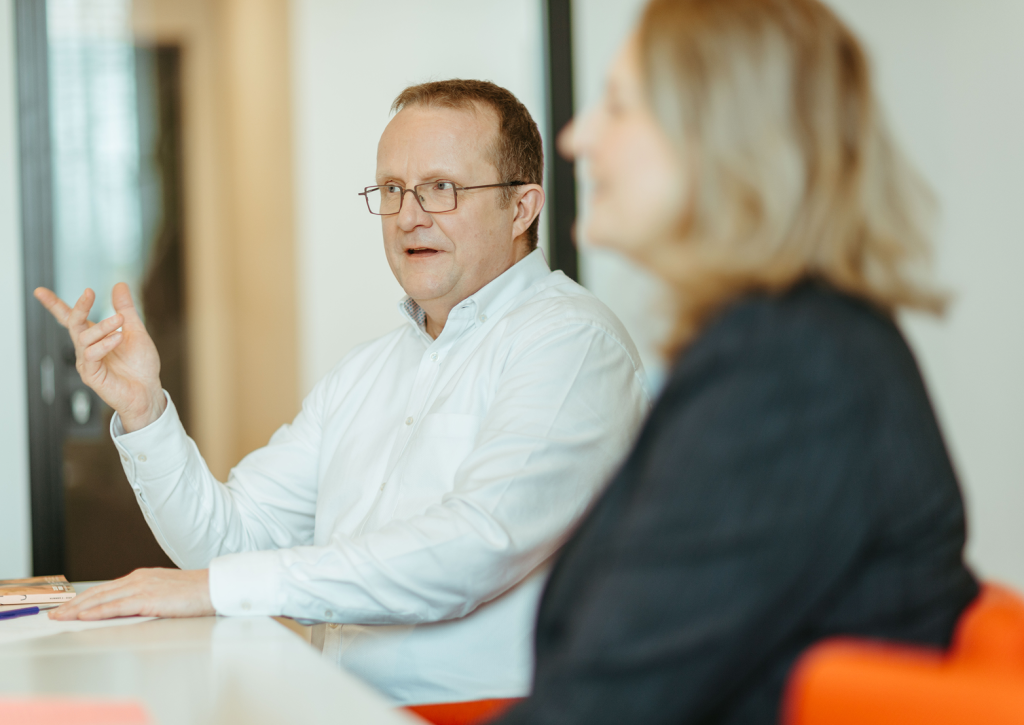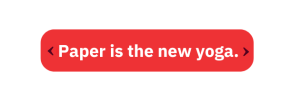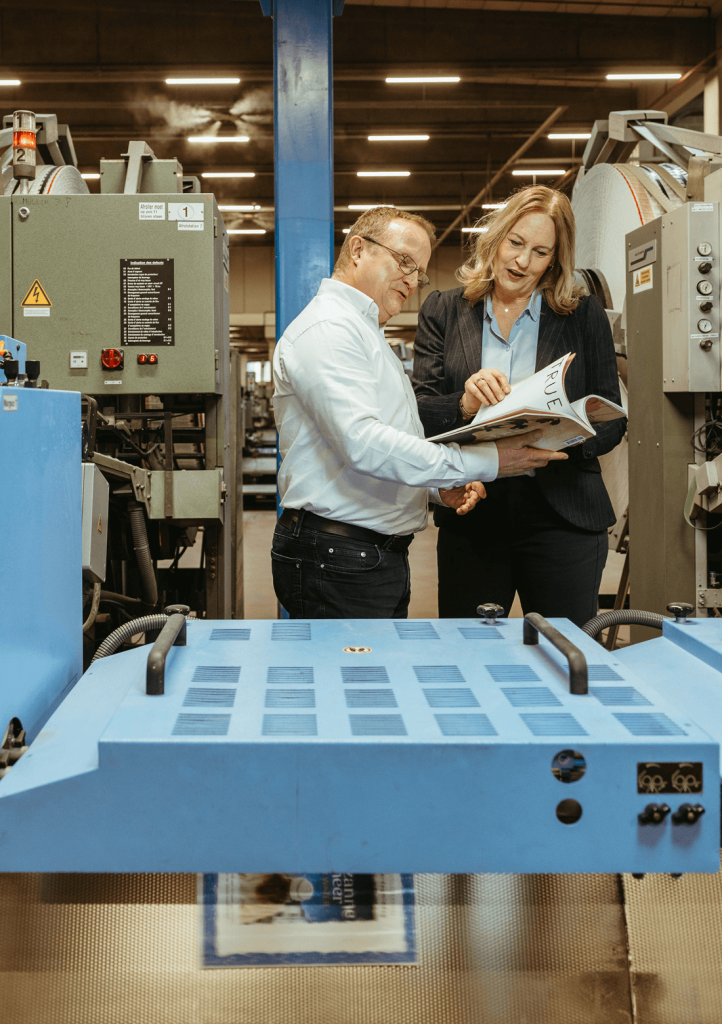
More than a magazine. That is Flow in a nutshell. The slow reading magazine is a gem that is also appreciated abroad. But there are challenges in terms of printing technology. A double interview with Editor-in-Chief and Creative Director Irene Smit and Bart Goos, Finishing and Logistics Manager.
What makes Flow so special?

Irene Smit: “Flow is more than a magazine. For us, paper is a gift, so we focus strongly on the tactile experience. Besides, we live in an age when there is an even greater need for that gift. The world is becoming increasingly digital and people are in dire need of a digital detox. Paper is the new yoga.
Our focus on paper is reflected in the different types of paper we use, about nine per issue, with each section, for example, having its own type of paper. Articles on psychosocial subjects, for instance, are printed on somewhat rougher paper. Subjects about feeling good, on the other hand, are printed on glossy paper.
Our love of paper is also reflected in the fact that we include two gifts – paper ones, of course – with each issue. Ten times a year no less. And finally, we also have a number of specials, including our winter and summer book. And also the Flow Book for Paper Lovers, a very thick magazine full of various paper gifts (envelopes, stickers, wrapping paper, labels, etc.), without text. A copy costs almost 25 euros and despite that price, it is our annual bestseller.”
Bart Goos: “It is that creativity and innovation that makes so much fun for us in production. It is a joint search for how to realise all the ideas.”

How is Flow printed?
Bart Goos: “The regular editions of Flow are printed at Roularta Printing in Roeselare. The challenge lies mainly in the fact that because the magazine consists of so many different elements a lot of insertion stations are needed. Fortunately, we have a Kolbus machine, which allows us to finish off the magazine effortlessly. It has twelve inlay stations and two gluing stations. The latter are important because the Flow editors also like to glue stuff into the magazine. Flow has proven to be the first project where we are using this machine to its full potential. Usually we only utilise 60 to 70% of its capacity.”
How exceptional is Flow for the printing house?
Bart Goos: “To give you an idea: we are used to printing magazines with six to seven sections and, therefore, finishing them with different inlay stations. Here we need a lot more stations indeed. It also means that you easily recognise the moment in the printing process when Flow is being finished. There is a hive of operators trying to make sure everything fits together well. However, that goes flawlessly. We also handle a Flow issue with care because the inlaying of the sections is done manually, and not via print rolls.
For Roularta Printing, Flow is a reference product. It shows what we are capable of. Hence, we hope it will also motivate external customers. After all, we want to attract more print believers.
Besides, our processes can also give ideas to the editorial staff. It doesn’t always have to come from the editors.”
Irene Smit: “That’s how we see it too. The creation of an issue of Flow hinges on real interaction. A good example is that, in former times, we used to finish off small inserts with staples. Until the people at Roularta Printing pointed out to us that that wasn’t necessary at all.”

What did this collaboration yield in terms of business in 2024?
Irene Smit: “2024 was a good year for Flow. We were taken over by the Roularta Media Group in January, which opened up many new opportunities for us. We have had two licences for some time now. Flow is produced by local teams in France and Germany, but we now had the opportunity to relaunch our English edition. For years, the latter was conceived in our editorial office in the Netherlands and distributed all over the world. However, during the corona pandemic we had to put a stop to it because the paper and distribution costs were going through the roof and shops worldwide were closing their doors. Because we now print Flow in Roeselare, the threshold to restart was a lot lower and we were able to bring back the English-language Flow. Today, this version is once again available in twenty countries. It proved to be an im- mediate success at Barnes & Noble in the US, the issues are flying out of the shops and our social media channels are over- whelmed with positive reactions.
You can certainly feel that our subjects are enormously popular. What we do is more in tune with the spirit of the times than ever. People need offline activities and a slower pace of life. They are looking for ways to live more consciously. We are also doing very well online, with about a million page views per month. There, we focus on mental health, creativity and good news. You can see that our message stands up just as well with- out our beautiful paper jacket.
Finally, there is another major advantage to being part of the Roularta Media Group: for the first time, the mind-style magazines Flow, Psychologie Magazine, Happinez and Yoga Magazine are all published by the same company, and that offers many opportunities. For example, we jointly organised “Selfcare Season”, inviting readers via newsletters to participate in an online challenge organised by these media brands. That resulted in more than 22,000 registrations and ultimately led to many new subscribers and online training courses sold by the brands in question.”
What else do you want to achieve with Flow?
Irene Smit: “Currently, Flow is a magazine with paper goodies. How nice would it be to occasionally turn things around and make it into a box with paper goodies and a small magazine. Would that make it a magazine with gifts or gifts with a magazine? I think that’s a fun thought exercise.”
Bart Goos: “And beyond that, the world is open to Flow. Currently, the magazine is already available in twenty countries. There is no doubt there is still room for growth. What about Asia, for example, where Flow is also popular?”
This article was first published in Roularta Media Group’s 2024 annual report.

